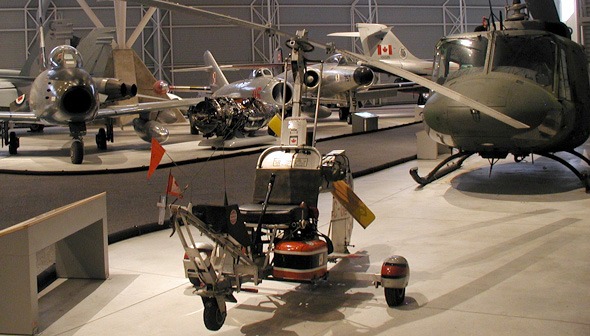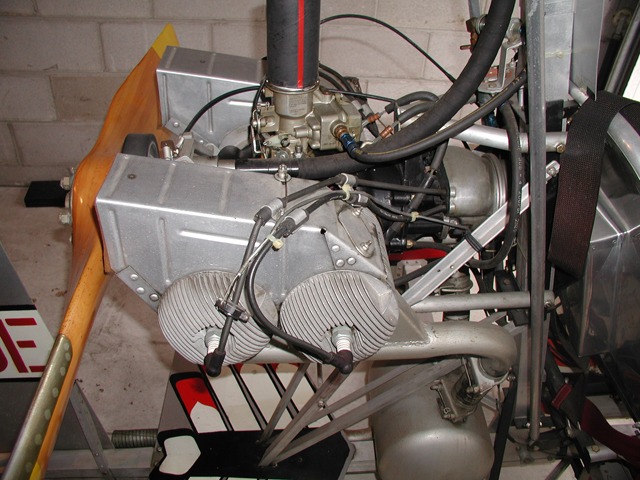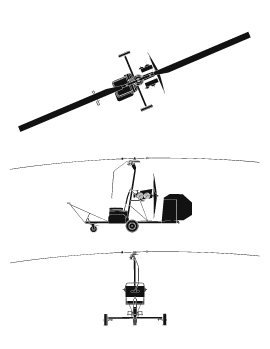Bensen B8MG Gyrocopter

Highlights
- An American recreational, single-seater autogyro designed by Bensen Aircraft Corporation and produced by Bensen and amateur builders from 1955 to 1987
- An autogyro, cousin of the helicopter kept aloft by a rotor which rotated freely
- Autogyros were associated with the 1930s but regained popularity during the 1970s as part of the home-built aircraft movement
- Thousands of sets of autogyro plans were sold to amateur builders
- Autogyros required specialized pilot training
- Dr. Igor Bensen also designed an unpowered autogyro, called a “gyroglider”
- First flight was in 1974
Artifact no.: 2002.0370
Manufacturer: Kit from Bensen Aircraft Corporation
Manufacturer location: United States
Manufacture date: 1974
Acquisition date: 2002
Registration number: C-GPJE
History
The gyroplane is a rotary-wing aircraft usually associated with the 1930s. Its free-wheeling rotor is spun by the action of the air on its airfoils when the aircraft is in motion; propulsion is provided by a conventional propeller. The rotation of the rotor needs to be initiated on the ground when the aircraft has no forward motion.
Gyroplanes were originally designed and built for the commercial market as aircraft capable of very short takeoffs and landings. The machines pioneered by Juan de la Cierva in Spain and the Pitcairn and Kellett companies in the United States resulted from their research into rotary wings and their efforts to develop a true helicopter. However, unlike helicopters, gyroplanes cannot hover, take off vertically or fly backwards or sideways.
Current location
Reserve Hangar, Canada Aviation and Space Museum
Provenance
Donation
Alexander Dutkewych built this Gyrocopter in Toronto, Ontario in 1974, using a kit produced by Bensen Aircraft Corporation in Raleigh, North Carolina. The Gyrocopter exceeded the Transport Canada’s engineering and inspection standards.
During the 1970s and early 1980s, Dutkewych flew the aircraft in the greater Toronto area, accumulating over 150 hours of flight time. He modified the aircraft in a number of ways, including adding a muffler. Over the years, the Gyrocopter was flown and displayed at numerous air shows, garnering a great deal of attention.
Dutkewych donated the B8MG to the Museum in 2002. It shares a set of interchangeable aluminum rotors with the museum’s Bensen B8 Gyroglider, which was also built by Dutkewych.
Technical information
- Rotor diameter
- 14.9 m (49 ft)
- Length
- 3.4 m (11 ft 3 in)
- Height
- 2 m (6 ft 9 in)
- Width
- 1.7 m (5 ft 8 in)
- Weight, Empty
- 112 kg (247 lb)
- Weight, Gross
- 227 kg (500 lb)
- Cruising Speed
- 96 km/h (60 mph)
- Max Speed
- 137 km/h (85 mph)
- Rate of Climb
- 305 m (1,000 ft) /min
- Service Ceiling
- 3,800 m (12,500 ft)
- Range
- 160 km (100 mi)
- Power Plant
- one McCulloch 4318E, two-cycle, 4-cylinder, 72 hp piston engine

